Starting Crypto Trading - Crypto Academy / S6W1 - Homework post for pelon53
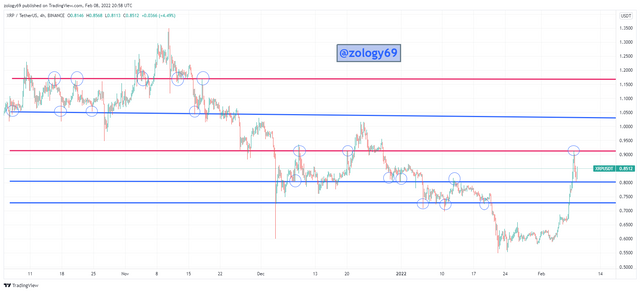

1.- In your own words, what is fundamental analysis? Do you think it is important for a trader? Justify the answer.

If you ask me, fundamental analysis is basically doing research considering the economic and financial history of an asset to determine whether it is overpriced of undervalued. To determine this, we need to have a value in our mind which we think a product should be worth, but isn’t. If we think the asset is currently worth less than it should, the product is undervalued and we can invest in it. However, if we find the opposite, the asset is overpriced and investing in it will be a let’s just say not so good idea.
Fundamental analysis involves studying the economic factors that can affect an asset’s price. This can include an organization’s reputation, and the road map of the asset or project’s managing board. Researching the competency and reputation of the company or the project’s team itself will tell you if you can trust the project’s development. Let’s just say fundamental analysis is like doing your background checks or “homework” on a product or project.
In my opinion and understanding, fundamental analysis is important for traders to do since this is what people do when they’re interested in joining a particular project or planning to invest into a project. Investors determine whether or not the project or product is currently under priced and invest into it if they believe it will be worth more in the future. Not running proper background checks and investing blindly due to psychological tricks like FOMO could lead you into investing in futureless projects.
If we consider the most recent SQUIDGAME token scam that left a lot of people bankrupt, we can say they didn’t do proper fundamental analysis before investing, as this would’ve revealed that the project was in fact not the Squid Game official teams. You can read more about it here
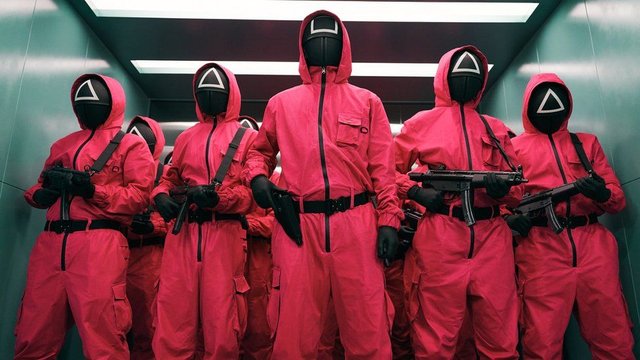

2.- Explain what you understand by technical analysis and show the differences with fundamental analysis

Whereas fundamental analysis helps INVESTORS determine an assets true value or worth, technical analysis in my understanding helps you evaluate an asset’s price action and possibly predict or identify investment opportunities when they arise (TRADE). Technical analysis is more focused on an asset’s price history.
Technical analysis is carried out using technical analysis tools to produce buy or sell signals based on price action, volume and asset’s volatility. It connects past trading history and makes predictions of future price action using previous price data.
Technical analysis comes after you have chosen to invest in an asset. It utilizes the concept of technical indicators, charts, patterns, and price action to help you spot good chances to enter and exit the market in profit and minimize losses, by predicting future price action.
Let's look at some differences between fundamental and technical analysis
| Parameter | Fundamental Analysis | Technical Analysis |
|---|---|---|
| Method of analysis | assets financial and economic history like cashflow statements | Charts, technical indicators, patterns, and price action |
| Timeframe of analysis | Analysis is slow and normally takes a year or several years to evaluate an assets value when considering fundamental analysis | price action of asset can be seen in weeks, months, days, hours, minutes and even seconds. |
| Objective | Helps us make long-term investments looking at economic or financial history and information of an asset | Used to make quick profits in trades by reading signals from technical indicators, charts and patterns. |
Both technical and fundamental analysis however different, are essential to make investments or trade an asset. Whilst you have absolute discretion as to which to use, I would advice we use both in order to maximize our profits.

3.- In a demo account, execute a sell order in the cryptocurrency market, placing the support and resistance lines in time frames of 1 hour and 30 minutes. Screenshots are required.

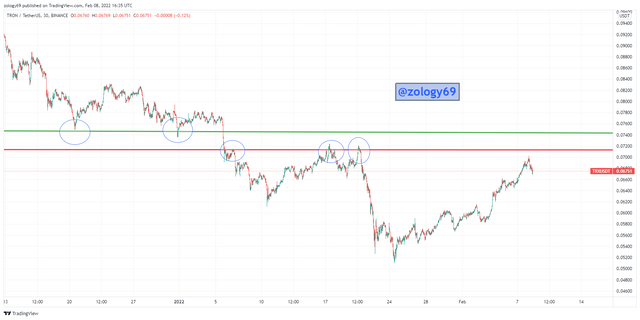
From the 30-min TRXUSDT chart above, we can identify 2 important resistance and support levels. The green line represents a support line where price couldn’t go further down. Price initially bounced off this point and went back up, until eventually it broke it. The red line represents a resistance line where price couldn’t go further up. Price is currently trading towards this line to either test it and bounce back or test and break it.
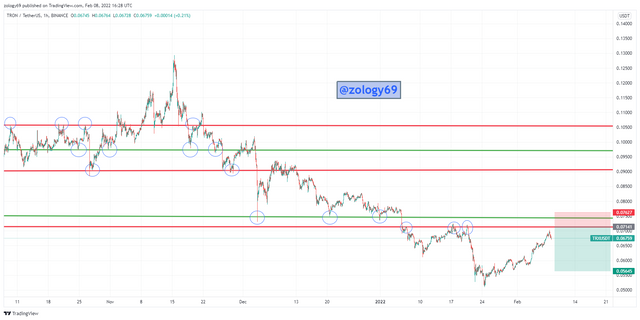
In the 1-hour TRXUSDT chart above, we can identify several resistance and support levels because of the higher timeframe used. Again the green lines represent support lines with the red lines representing resistance lines. Price is currently at $0.06759. Seeing that price is trading toward a resistance line, there is very high possibility it bounces back after touching the resistance line. There is also a support line just near my resistance line and this support can turn into a new resistance. For this reason, I enter a short position with my stop loss a little above the support line at $0.07627, and take profit at $0.05645.
Then I connected my tradingview paper trading account and placed my order. The screenshot below shows how I placed my sell order.
.png)
Finally, this is proof of my transaction.


4. - In a demo account, execute a buy order in the cryptocurrency market, placing the support and resistance lines in time frames of 1 day and 4 hours.


In the 4-hour XRPUSDT chart above, we can identify several resistance and support levels because of the higher timeframe used. Here, the blue lines represent support lines with the red lines representing resistance lines.
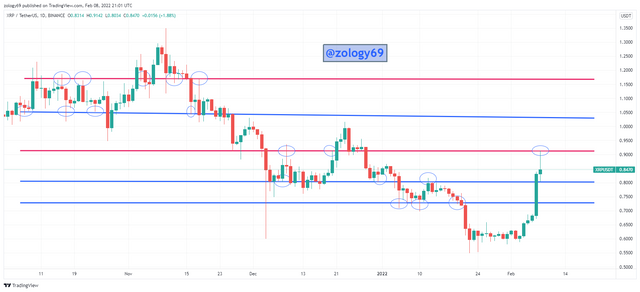
On the same chart on a 1-day timeframe above, The blue lines represent a support line where price couldn’t go further down. Price initially bounced off this point and went back up, until eventually it broke it. Price is currently trading towards this line to either test it and bounce back or test and break it. The red line represents a resistance line where price couldn’t go further up.
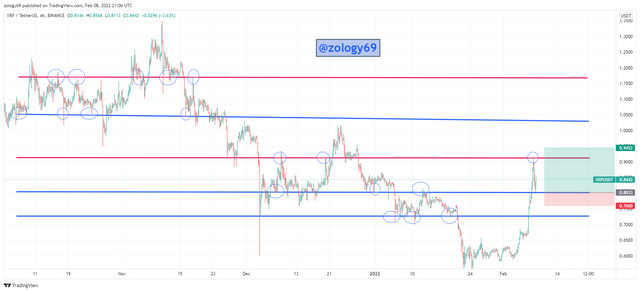
Price is currently at $0.8442. Seeing that price is trading toward a support line, there is very high possibility it bounces back up after touching the support line. So I enter a long position with my stop loss a little below the support line at $0.7600 , and take profit at $0.9452 . My trade setup is seen in the above chart.
Then I connected my tradingview paper trading account and placed my order. The screenshot below shows how I placed my buy order.
.png)
Finally, this is proof of my transaction.


5.- Explain the “Hanging Man” and “Star” candlestick patterns. Show both candlestick patterns on a cryptocurrency market chart. Screenshot is required.

The shapes and appearance of some candles on the candlestick chart allow us predict price action some times. The size of the candlestick parts and position on the trend identify certain special candlesticks. Two of these special candlesticks are the Hanging Man and the Shooting Star.
The Hanging Man
The hanging man like all other candles, has a main body and a lower wick. You’re probably going to be wondering why I only said lower wick. Well this is because unlike normal candles, the Hanging Man may or may not have an upper wick or shadow. It has a small main body, with a short upper wick or no upper wick at all, and a very long lower wick. Hanging Man tells us of a potential bearish reversal.
If you know what the body parts of the candles represent, you’ll know that a short or absent upper wick means price either traded only a little above the opening or closing price or didn’t trade above it at all. This suggests that buying pressure is weakening and bears are taking control of the market. If the Hanging Man happens to be a bullish candle, then that means price only traded a little above the closing price. However, if it is a bearish candle, then price only traded a little above the opening price in this case.
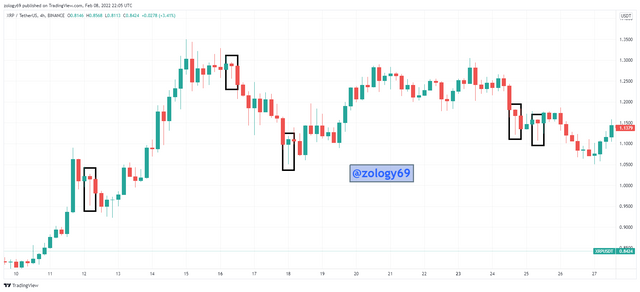
From the screenshot above, we can see how the candlesticks highlighted in rectangles have small main bodies, long lower wicks, and short or no upper wick at all.
The Shooting Star
This is another special candlestick that looks like hanging man but inverted. It has a small main body too, just like the hanging man. But in this case, instead of a shorter upper wick and longer lower wick, the shooting star has a longer upper wick and shorter or no lower wick.
The shooting star normally forms at the top of an uptrend and it signals a potential downtrend. For more confidence in the shooting star, traders generally observe if the next candle after the shooting star is bearish or not. If the next candle turns out bearish, traders consider the shooting star valid and take short positions.
The psychology behind the formation of the shooting star is that as price opens, there is huge spike up in price forming the long upper wick and later during the trading day, buyers are defeated as sellers come into the market to drag price back down to close somewhere near the opening price of the day.
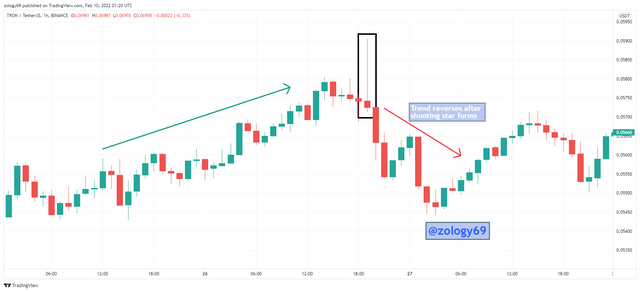
In the 1-hour TRXUSDT chart above, we can see a shooting star form at the top of the uptrend. The next candle after the shooting star is a bearish candle, giving traders more validation of the shooting star. We see the uptrend reverse for a bit after the formation of the shooting star.


People enter the markets looking for different things. Whatever your plan is, you need to do some analysis before you invest in order to not go bankrupt soon and leave the show before it even starts. For people looking to make long-term investments, the ideal analysis to do would be fundamental analysis. This will tell you which asset or product is currently underpriced or undervalued. With this information, you can invest in this asset to make good profits in the long term.
Likewise, technical analysis will be best for you if you’re someone that likes to make quick profits off of reading signals buy or sell signals from charts, technical indicators and patterns. This takes relatively less time to do but requires that you understand your technical indicators or patterns. Patterns like resistance and support levels and special candles of the candlestick chart like the shooting star, hanging man and hammer are some few tools that can be used in technical analysis.
CC:prof @pelon53